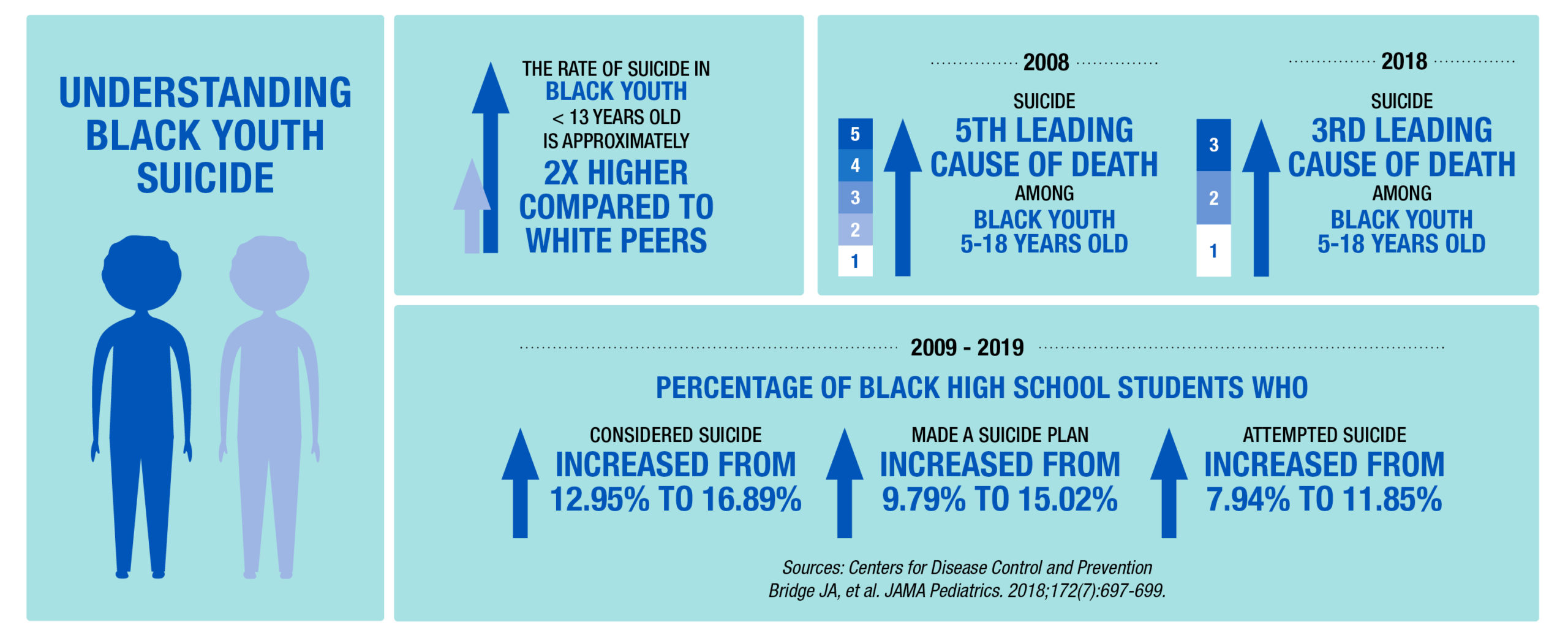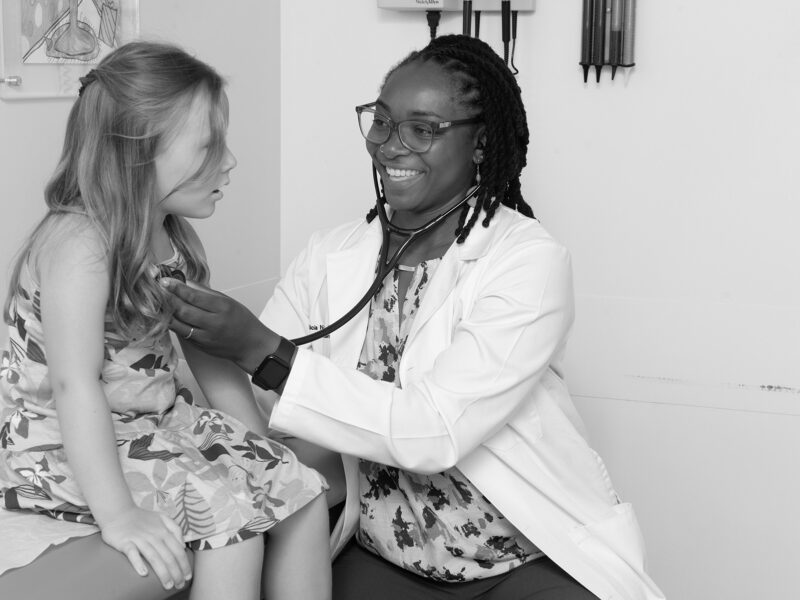Understanding Black Youth Suicide: Steps Toward Prevention
Understanding Black Youth Suicide: Steps Toward Prevention https://pediatricsnationwide.org/wp-content/uploads/2021/05/102519ds6118_sheftall-1024x596.jpg 1024 596 Abbie Miller Abbie Miller https://pediatricsnationwide.org/wp-content/uploads/2023/05/051023BT016-Abbie-Crop.jpg- June 28, 2021
- Abbie Miller

To understand the how and why of rising rates of Black youth suicide, researchers call for a ‘Ground Zero’ approach.
In December 2019, the Congressional Black Caucus released the statement “Ring the Alarm: The Crisis of Black Youth Suicide in America.” The statement focused on rising suicide rates among Black youth in the United States.

In response, the National Institute of Mental Health’s request for information on preventing Black youth suicide, Arielle Sheftall, PhD, and Adam Miller, PhD, responded to this call in a statement published in JAMA Pediatrics. They emphasized the need for research and actions toward suicide prevention among Black youth must start from the ground up. The three key points they described are below.
“Set a ‘ground zero’ research funding agenda prioritizing theory development and tests of culturally relevant risk factors for Black youth suicide.”
Little research exists on the how and the why of Black youth suicide.
“Applying the white-centric lens that has driven existing suicide research is not sufficient to solving the increasing rates of suicide among Black youth,” Dr. Sheftall says. “That’s why we call for a ‘ground zero’ approach. We need to look at our basic assumptions and theories about suicide and assess whether they hold true for Black youth.”
For example, risk factors for suicidal behaviors may not apply equally to Black youth compared to white youth. Dr. Sheftall shares that in data collected (currently unpublished) across two separate studies, Black youth with and without suicide attempt history reported the same levels of hopelessness and depression.
Additional data published in Culturally Diverse and Ethnic Minority Psychology last year suggested that traditional risk factors such as mental health problems and history of suicide attempts were less likely to precede death by suicide in Black youth.
“To understand how disparities in suicide rates are driven, we need to develop and test culturally informed theories of suicide risk and behavior. Identifying unique risks, specifically race-related stressors, will enable us to create more effective prevention tactics,” says Dr. Sheftall.
According to the authors, a particular area of concern is the exposure to killings of unarmed Black men. This exposure has been associated with negative mental health outcomes throughout the Black community, but it is currently unclear how exposure (either direct or via media coverage) to the murders of Black youth (Trayvon Martin, age 17, Jordan Davis, age 17, Tamir Rice, age 12, and Michael Brown, age 18), sometimes by white police officers, affect Black youth mental health.
“Fund research aimed at understanding the phenomenology and developmental trajectory of Black youth suicidal ideation and behavior.”
Because evidence suggests that Black youth may not exhibit expected or “classic” warning signs of suicidal behavior – depression, reported suicidal ideation or attempts – before dying by suicide, Drs. Sheftall and Miller say that research aimed at understanding the trajectory of suicide should be a priority.
“Family dynamics play a big part in this trajectory, and it’s not well understood how these dynamics in the Black community affect suicide rates,” says Dr. Sheftall. “Some preliminary findings show that the level of parental awareness of a child’s suicidal ideation and behavior is lower among Black parents than among white and Latinx parents.”
“Research attempting to replicate these findings with larger samples, identifying barriers for Black youth for sharing suicidal ideation or behaviors, and identifying unique features of suicidal ideation/behaviors among Black youth is needed,” she adds.
“Engage trusted community organizations/institutions in suicide prevention efforts for Black youth.”
Preventing Black youth suicide will require taking research and prevention efforts out of institutional settings and into the community. Churches, Black Greek organizations, Boys and Girls Clubs of America, after-school programs (such as the YMCA/YWCA) and others are community settings where trust may already exist. By partnering with these organizations and programs, the authors suggest there is an opportunity to reach Black youth more effectively.
“One of the projects we hope to do involves taking a well-established suicide prevention program, which has been shown to be effective in school settings, out of the schools and into the community,” says Dr. Sheftall. “The goal is to specifically target Black youth which will enable us to see if this program works for this population and in a different setting. If it does, or if we learn how to improve the program for this context, we have made progress that could impact the rising suicide rates among Black youth.”
Community interventions, including those in barber and beauty shops, have already been tested to tackle health issues such as high blood pressure, cardiovascular health and HIV testing. Dr. Sheftall says that similar successes could be achieved in mental health.
“We need help from the community to destigmatize and normalize conversations about mental health and suicide,” she says. “Getting into the community and getting support from community stakeholders like barber and beauty shops, churches and after-school programs can make a huge difference in the rates of suicidal behavior among Black youth.”
Reference:
Sheftall AH, Miller AB. Setting a ground zero research agenda for preventing Black youth suicide. JAMA Pediatrics. 2021 Jun 2. [Epub ahead of print]
Image credit: Nationwide Children’s
About the author
Abbie (Roth) Miller, MWC, is a passionate communicator of science. As the manager, medical and science content, at Nationwide Children’s Hospital, she shares stories about innovative research and discovery with audiences ranging from parents to preeminent researchers and leaders. Before coming to Nationwide Children’s, Abbie used her communication skills to engage audiences with a wide variety of science topics. She is a Medical Writer Certified®, credentialed by the American Medical Writers Association.
-
Abbie Millerhttps://pediatricsnationwide.org/author/abbie-miller/
-
Abbie Millerhttps://pediatricsnationwide.org/author/abbie-miller/
-
Abbie Millerhttps://pediatricsnationwide.org/author/abbie-miller/
-
Abbie Millerhttps://pediatricsnationwide.org/author/abbie-miller/







